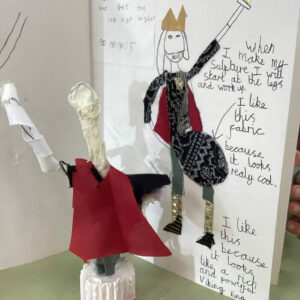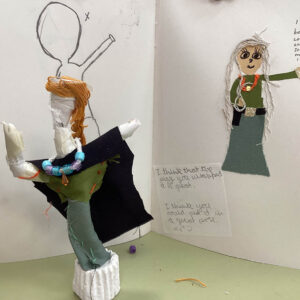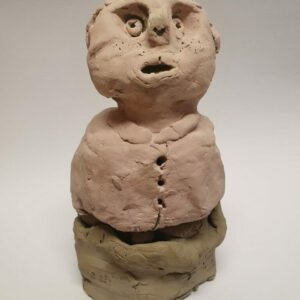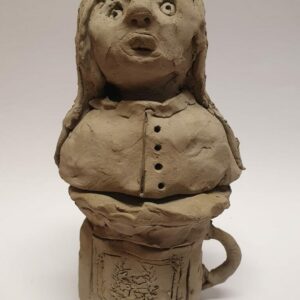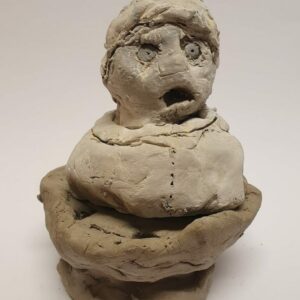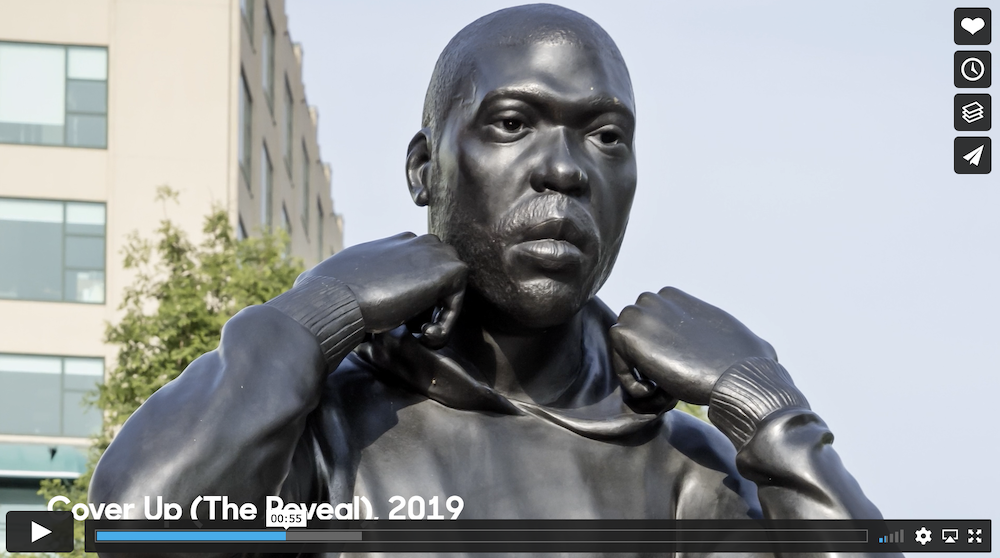Pathway: The Art Of Display
Pathway for Years 3 & 4
Disciplines:
Sculpture, Creative Thinking Sketchbooks
Key Concepts:
-
That artists think carefully not just about what they make, but also how they present what they make.
-
That when we view sculpture (or other art), the context (way it is presented) affects how we react to it.
-
That how something will be seen can help us shape what is made.
-
That we can give thought to how we display the art we make, to help us understand how people will view our work.
In this pathway children begin to think about two very important aspects of making art: context and presentation.
When we make art that others will see, it’s important that we understand how we present the work will influence the way people see the work. This pathway presents an opportunity for pupils to discover and question the role of the “plinth” in sculpture.
Children explore how other artists use the idea of “plinth” to make work. There are then three choices of project. The 1st explores how we can present found objects to re-see them as sculpture, making a mini gallery.
In the 2nd project children make sculptures of themselves, putting a version of themselves on a plinth, and in the 3rd children plan an artwork or performance for a fictional plinth in their school.
Medium:
Clay, Paper, Drawing Materials, Various Modelling & Construction Materials
Artists: Anthony Gormley, Yinka Shonibare, Thomas J Price
If you use this resource in your setting, please tag us on social media: #InspiredBy @accessart (facebook, twitter) @accessart.org.uk (instagram) and share the url. Thank you!





Teaching Notes
Find the MTP for this pathway here.
Curriculum Links
English: Make ‘plinth people’ of characters from your chosen book. Explore how they can be displayed to interact with one another and tell the story. Use “plinth” to give voice/performance to narratives in English.
History: Create plinth people inspired by figures from your chosen civilisation topic e.g. the Ancient Greek gods and goddesses or Roman Emperors. Use “plinth” to give voice/performance to characters in history.
PSHE: Supports Collaboration, Peer Discussion.
I Can…
-
I have seen how some artists choose to display their work on “plinths” and I have understood how the way a work is displayed can affect the way the audience sees the work.
-
I can use my sketchbook to collect ideas about how other artists consider how their work is displayed.
-
I can use clay to make quick three dimensional sketches of figures sitting on “plinths”. I can use the clay to capture character/emotion of the body.
The following I Can statements are dependent upon project chosen.
Pocket Gallery:
-
I can find objects around me and think about how I can re-see them when I display them as art objects.
-
I can manipulate materials to make an environment for the art objects.
-
I can think about how the audience might react and capture this in my artwork.
The Fourth Plinth Challenge:
-
I can work as a small team and plan an art project around how we would use a plinth in our school, taking ideas of other people on board and contributing my own.
-
I can think creatively about art/object/performance/audience.
Plinth People
-
I can use my sketchbook to think about my interests/personality traits which I am proud of.
-
I can imagine how I could create a version of myself that I would like to see on a plinth.
-
I can make a sculpture/ plinth from construction materials which shows a version of myself, using things like body position, clothes, props and fine details to give the sculpture character.
All Projects:
-
I can share my work with others, and talk about my response to the project, what worked well and what I would like to try again. I can listen to the response to my work from my classmates and take on board their feedback.
-
I can appreciate the work of my classmates, understanding where there are similarities and where there are differences. I can share my response to their work.
-
I can take photographs of my artwork, thinking about focus, lighting and composition.
Time
This pathway takes 6 weeks, with an hour per week. Shorten or lengthen the suggested pathway according to time and experience. Follow the stages in green for a shorter pathway or less complex journey.
Materials
Clay, thick cardboard (cut up boxes), small wooden blocks (or lego).
Option 1: Pocket Gallery – Camera, printed photographs, white card, foamboard (or cardboard boxes turned on their side), a collection of small objects, torches, acetate filters or sweet wrappers, rubber bands, PVA glue, scissors.
Option 3: Plinth People – (for the pre made plinths), corrugated card, wire, fine casting plaster,
(for the figures) Wire, construction materials, fabric, glue.
See This Pathway Used In Schools









